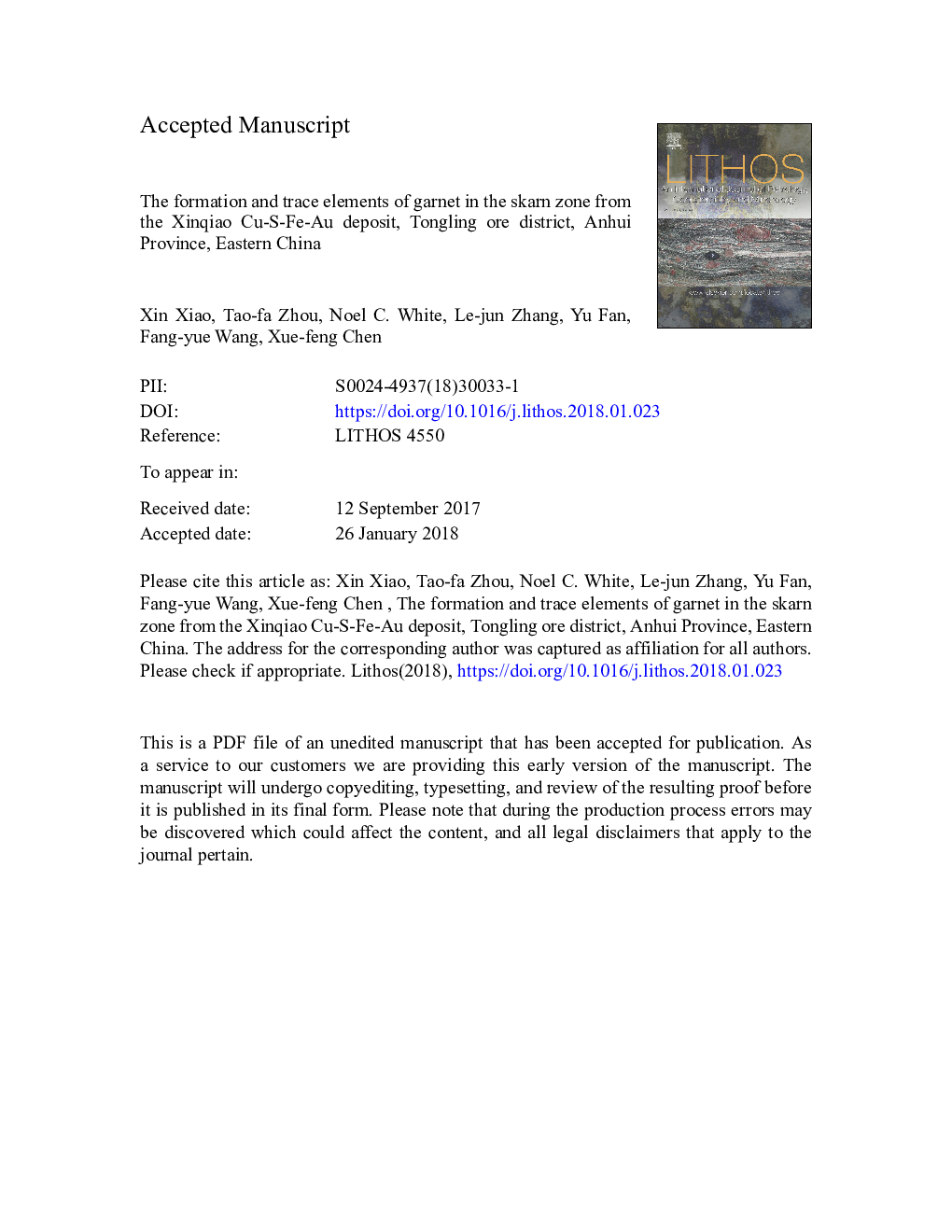| Article ID | Journal | Published Year | Pages | File Type |
|---|---|---|---|---|
| 8911736 | Lithos | 2018 | 48 Pages |
Abstract
Xinqiao is a large copper-gold deposit and consists of two major mineralization types: stratabound and skarn. The skarn occurs along the contact between a quartz diorite intrusion and Carboniferous-Triassic limestone. Xinqiao has a strongly developed skarn zone, including endoskarn and exoskarn; the exoskarn is divided into proximal and distal exoskarn. We present systematic major, trace and rare earth element (REE) concentrations for garnets from the skarn zone, discuss the factors controlling the incorporation of trace elements into the garnets, and constrain the formation and evolution of the garnet from skarn zone in Xinqiao deposit. Grossular (Adr20-44Grs56-80) mostly occurs in endoskarn and has typical HREE-enriched and LREE-depleted patterns, with small Eu anomalies and low âREE. Garnets from the exoskarn show complex textures and chemical compositions. The composition of garnets range from Al-rich andradite (Adr63-81Grs19-47) to andradite (Adr67-98Grs2-33). Garnet in endoskarn has typical HREE-enriched and LREE-depleted patterns. Al-rich andradite in proximal skarn has small Eu anomalies and moderate âREE. Andradite from distal exoskarn shows strong positive Eu anomalies and has variable âREE. The U, Y, Fe and Al relationship with âREE shows that two mechanisms controlled incorporation of REE into the garnets: crystal chemistry (substitution and interstitial solid solution) mainly controlled in the endoskarn garnet (grossular) and the proximal exoskarn (Al-rich andradite), and fluid and rock chemistry (surface adsorption and occlusion) controlled REEs in the distal exoskarn. Furthermore, Al has a negative relationship with âREE indicating that REE3+ did not follow a coupled, YAG-type substitution into the garnets. Variations in textures and trace and rare earth elements of garnets suggest that the garnets in the endoskarn formed by slow crystal growth at low W/R ratios and near-neutral pH in a closed system during periods of diffusive metasomatism. The garnets in the exoskarn formed rapidly from externally derived fluids during advective metasomatism, and adsorption had a major control on the REE patterns in distal exoskarn. With the end of water-rock reaction, the contents of REE decreased in the hydrothermal fluid, and the system became nearly closed.
Keywords
Related Topics
Physical Sciences and Engineering
Earth and Planetary Sciences
Geochemistry and Petrology
Authors
Xin Xiao, Tao-fa Zhou, Noel C. White, Le-jun Zhang, Yu Fan, Fang-yue Wang, Xue-feng Chen,
